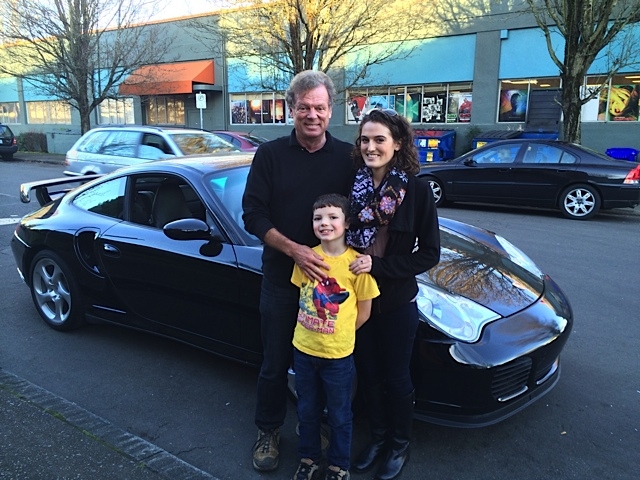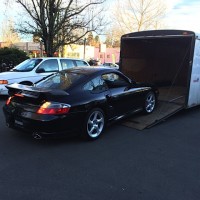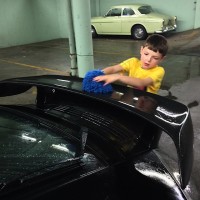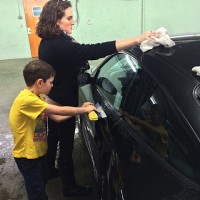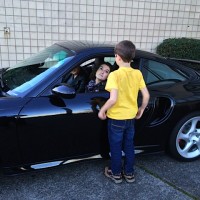Kids crash cars.
They crash new cars and old cars. They will crash anything they drive.
But how do we expect young kids to grow up with a love for our cranky old cars if we make them wait until they are 25 years old to drive them? By then, if they’ve already had nine years of driving modern cars, then pulling out a choke, pumping a throttle and slipping a clutch are going to be alien, disconcerting concepts.
So far, I’ve been involved with five teenagers as they learned to drive. Two of my former stepsons are in their mid-thirties, and two are in their early twenties. Alex is now 23. Collectively, they’ve sent three cars to that great scrapyard in the sky.
One was driving a 1970 Fiat 124 Spider when a drunk ran a red light and essentially took the nose off the car. No injuries.
Another had a 1978 BMW 320i go out of control on a freeway, spin 720 degrees, and tap the barriers on both sides before coming to a rest. I suspect that incident was a combination of driver inexperience, deep ruts on the freeway, rain and some aged rear suspension parts. No one was hurt.
Then there was the Boxster S that left the highway, rolled several times and took out a power pole in the process. In a powerful testimony to the structural integrity of the Porsche, neither the driver nor the passenger were injured.
There was no alcohol or any drugs involved in any of these incidents.
There have also been parking-lot scrapes, sunroofs left open overnight through rainstorms, dead batteries from headlights left on and more.
Drive My Car?
So given these experiences, are these the kids I want driving the SCM 1958 Alfa Romeo Giulietta Sprint Veloce, 1967 Volvo 122S or 2000 Dodge Viper?
The answer is yes, but.
To foster an appreciation for old cars, there is no substitute for seat time. However, as old cars are inherently unsafe compared with new ones, this initial exposure must happen under thoughtful circumstances.
Old cars can’t keep up with today’s Hyundais or Kias. They have worse brakes, steering and road-handling than nearly every new car. Imagine telling someone he has to pump the brakes on his Honda Fit to get the pedal firm. Or that she needs to keep an eye on the temperature gauge when going up long hills to make sure her Ford Focus doesn’t overheat.
The ideal introduction to the world of old cars is a trip on two-lane back roads. Get your 16-year-old behind the wheel as soon as possible, and kindly and gently give him pointers as he struggles with the controls.
Help him develop his sense of “mechanical sympathy” as he learns to listen to the car. An old car tells you when it is being driven well. It punishes your mistakes by sputtering or stalling. Get him used to brakes pulling left or right and tires squealing at unexpected moments.
Above all, don’t lose your sense of humor as he grinds the gears or lugs the engine in your precious vintage car.
No Freeways
I would reserve freeway exposure to a time when you feel your child has a degree of mastery.
Modern freeways are torture chambers for old cars. Everyone on them is driving badly and quickly. They are crowded. Cars and trucks are big. People are talking on the phone and texting while going down the road.
There is no joy for an old car on today’s Interstates.
Taking a Friend
When you think your teenager is ready, invite her to take a friend and go on a simple one-day tour. Go along in another of your cars, but don’t get too close. Let them enjoy their own classic-car bubble.
She will enjoy demonstrating her mechanical expertise to her friends, starting and shifting with authority.
The final step is to have her enter some sort of tour and head out on her own. Your job is to have the car prepped and ready — not have her learn how to replace a gummy fuel filter by the side of the road. The only tools I carry are a set of jumper cables, a tow strap and the phone number of a towing service of my classic car insurer.
The Risks
Still, you should always be mindful of the risks involved. Many old cars have only lapbelts. Collapsible steering columns are rare. As I mentioned above, steering, braking and handling are far below today’s standards. There are no electronic aids, such as stability control.
But if you have thoughtfully engaged your child in this old-car-driving educational process, you have a chance to create a skilled driver. More important, you want him to have a respect for this aged machinery and an awareness of what is normal and what is not.
I’m lucky that my daughter Alex drinks the old-car Kool-Aid. She’s been through a variety of driving schools and has taken our old cars on multi-day events. She’s had to nurse cars home with blown headgaskets and is adept at connecting jumper cables.
She drives carefully and thoughtfully, with just enough brio for the circumstance.
Turbo Time
Which is why I felt comfortable watching her drive off in our just-delivered 2001 Porsche 911 Turbo. While it is not a quirky old car, it is an extremely powerful car, with 415 horsepower on tap.
While I can’t guarantee that an accident won’t happen – after all, there is a reason they are called accidents – I know I have trained her to respect her machinery and the road. Alex has driven our Dodge Viper (with me in the passenger seat) and is comfortable with big-horsepower machines.
At some point, you have to let go and allow your child to find her own sense of self behind the wheel. As I watched Alex head down the road, I remembered teaching her how to drive a stick shift so many years ago, and the number of times she practiced up-and-down shifting with me next to her in underpowered, finicky old cars.
When she told me she wanted to take the Turbo, I was delighted to say yes. If you want interesting cars to be a part of your children’s lives when they grow up, you have to make them a part of their lives now.

